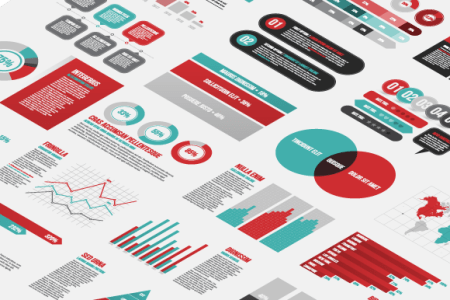4 Reasons Your Business Should Be Using a Dashboard in Google Analytics & Why.
Google Analytics is the go-to tool for most business web traffic collection. It’s lightweight, robust, easy to integrate with most websites. Google provides great support and updates for a free tool and it’s generally regarded as all you need for web traffic data, even at an enterprise level.
As organisations focus more of their marketing and promotion online and create content for marketing, having Google Analytics quietly sitting in a corner, dutifully collecting data and then packaging it up a generic weekly report on last week’s ‘hits’, conversions or bounce rate is stagnation.
Why?
Because, fundamentally that data is what was, or at best: what is. It’s real value is not in measurement but it ability to provide insight, direct future decisions leading to understanding:
a. what might be
b. what could be
c. what should be
If you use your data (numerical or otherwise) to ask questions with the intent that it leads to better business intelligence, then you need tools at your disposal to be able to see and understand that information in a snapshot.
That ability exists in dashboards. Dashboards are a customisable, simple way of focusing your analytics data on a problem/s, questions or areas that are most relevant to you, graphically and in real-time.
You can make your own, look for a free one or get an agency to create one for you.
Here are 4 reasons that we use them and so should you.
Time & Efficiency.
Dashboards will save you time. Learn how to set up and understand a dashboard, or grab a pre-made one. Align your goals for the website or department and ask yourself what you need to be answered and why.
For example, if you’re trying to determine what content is most effective and why, then create a dashboard to support this. It may have an average time on page, page views per session and bounce rate. Throw in referral traffic to see what content is sending traffic through to the site and from where and you’ve got a snapshot of your best performing content pages.
If you’re an e-commerce site conversions, attribution, products, pages, device, revenue is probably where your snapshot starts. Google Analytics is great but it takes time to navigate, compare and jump from dataset to dataset. Setup a dashboard and get deeper in, more quickly.
Reframe the Problem Visually.
We use Google Analytics mostly to measure data numerically. This is not a problem so much but it can hamper your ability to view it critically, through different lenses, which is vital when reframing problems or looking for different angles.
If you use your dashboard to move away from the spreadsheet-style data and use its charts and maps and lists to give a new perspective.
Comparative Analysis.
A good dashboard allows its user to quickly access and interpret data. Google Analytics is great for comparing datasets (days, weeks, month, year-on-year etc.) the problem is that you need to move between different areas to compare the data.
The secondary dimension or segment function covers this to an extent but for a quick snapshot of the current state against previous, use a dashboard.
Create a dashboard to compare pages for your content marketing behaviour. New users through your blog landing page can be compared to bounce rate and exit page; Compare that traffic to goal completion and then you know which blog subject gets people taking action.
Focus On Quality, Not Quantity.
A great dashboard should make it easier to delve deeper into your website and see how traffic behaves. If you understand click behaviour and user motivation, then you have insight into your customer behaviour – valuable business intelligence in any industry.
If you’re just measuring what, you’re missing out on the how and why.
Just caring about organic traffic from month to month and not why that growing or shrinking is means you’re missing out on the bigger picture.
Using a dashboard allows you to set up multiple views of the state of your site. Have one for organic, one for landing and exit pages, one for social media traffic. Being aware of the current state of your site allows you to be able to plan and utilise the data to plan for a future or ideal state.
It won’t give you the answers but will give you a quick understanding and you’ll be able to ask better questions.





